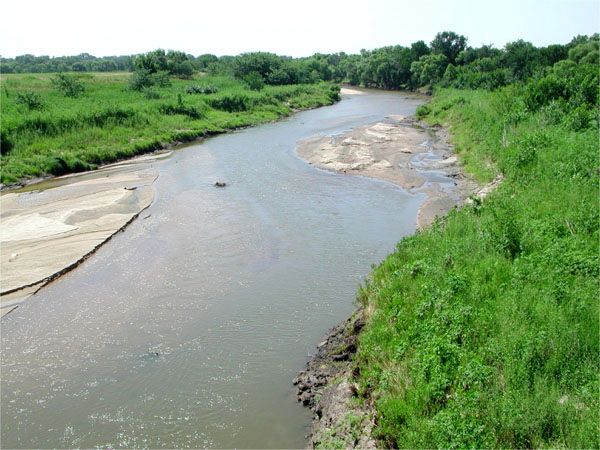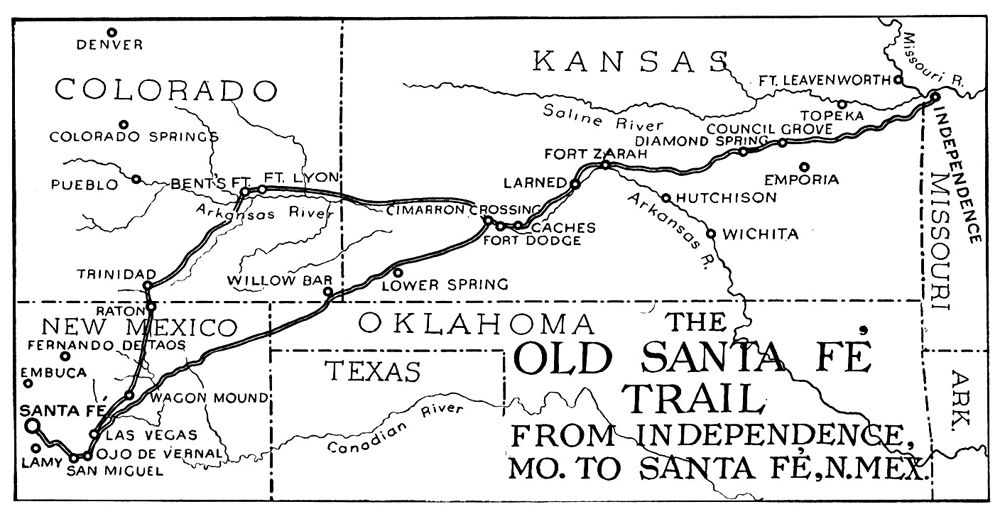
Where the Prairies Whisper Tales: Rice County and the Enduring Echoes of the Santa Fe Trail
In the heart of Kansas, where the vast sky meets an equally vast expanse of fertile prairie, lies Rice County. Today, it’s a landscape defined by meticulously tilled fields, wind turbines silently carving power from the air, and small, resilient communities. Yet, beneath this modern veneer, and often visibly etched into the land itself, lies a profound connection to one of America’s most iconic arteries of commerce and adventure: the Santa Fe Trail. Here, the whispers on the wind aren’t just the rustle of wheat; they are the ghosts of wagons, the shouts of traders, and the silent, determined footsteps of pioneers who forged a path into the American West.
The Santa Fe Trail, stretching over 900 miles from Independence, Missouri, to Santa Fe, New Mexico, was not merely a path; it was a grand economic experiment, a cultural bridge, and a crucible of human ambition. For nearly six decades, from its inception in 1821 until the arrival of the railroad in the 1880s, it served as the lifeblood of trade between the United States and Mexico, transforming the sparsely populated frontier into a bustling thoroughfare. And Rice County, though perhaps not as widely celebrated as other trail landmarks, played a pivotal and often arduous role in this epic journey.
A Ribbon Across the Plains: Rice County’s Place on the Trail

Geographically, Rice County sits squarely on the central leg of the Santa Fe Trail. After leaving the established settlements further east, traders and travelers faced the daunting prospect of hundreds of miles of open prairie. This section of the trail, often referred to as the "Wet Route" due to its proximity to various rivers and creeks, presented its own unique set of challenges and opportunities.
For those traversing Rice County, the landscape would have been a seemingly endless ocean of tallgrass prairie, punctuated by the meandering courses of the Little Arkansas River and its tributaries. These waterways, while offering life-sustaining water, also posed significant obstacles. Wagon trains, often numbering dozens of vehicles, had to contend with muddy banks, swift currents after rains, and the ever-present danger of capsizing or getting mired in the boggy ground.
"The crossing of the Little Arkansas was always a test of patience and muscle," an imagined journal entry from a weary 19th-century teamster might read. "After days of dust and sun, the promise of water was a blessing, but the work of getting twenty wagons across, without losing a single bale of goods, felt like a punishment. The riverbed was treacherous, the banks steep. But we made it, as we always did, with curses and cheers in equal measure."
Indeed, the Little Arkansas River was a critical landmark. It was one of the last reliable water sources before the trail veered southwest, eventually splitting into the drier Cimarron Cutoff (favored for its shorter distance) and the Mountain Route. For those on the Wet Route, Rice County offered a brief reprieve, a chance to water livestock, repair wagons, and perhaps hunt buffalo before the more challenging stretches ahead.
The Daily Grind: Life on the Trail in Rice County
Life on the Santa Fe Trail was a relentless cycle of sunrise-to-sunset travel, punctuated by moments of peril and stark beauty. For the traders, their wagons laden with textiles, tools, and manufactured goods destined for the eager markets of Santa Fe, the journey through Rice County was a test of endurance and resolve. These were not leisurely travelers; time was money, and every delay chipped away at their profits.
The days were long and monotonous, the only sounds often the creak of the wagons, the lowing of oxen, and the incessant wind. At night, the prairie sky above Rice County would have been a dazzling spectacle, a canvas of stars unfettered by artificial light, providing a stark contrast to the small, flickering campfires below. Around these fires, stories were shared, plans were made, and the shared camaraderie of the trail forged bonds that often lasted a lifetime.
But the beauty was often overshadowed by danger. Native American tribes, primarily the Comanche and Cheyenne, viewed the trail as an intrusion into their hunting grounds. While many interactions involved peaceful trade, conflicts were not uncommon. Travelers had to be constantly vigilant, forming defensive perimeters at night and always keeping an eye on the horizon. Disease, accidents, and the unpredictable Kansas weather – from scorching summer heat to sudden blizzards – also claimed their share of lives.

Rice County’s flat, open terrain, while ideal for relatively easy wagon travel in good conditions, also offered little in the way of natural cover, making travelers vulnerable to both weather and potential raids. The courage and resilience of those who traversed this land are hard to overstate.
Economic Engine and Cultural Crossroads
The Santa Fe Trail was more than just a path; it was an economic engine that fueled the growth of the American Southwest and brought Mexican culture into closer contact with American expansionism. The goods transported over the trail – everything from fabrics and hardware to military supplies – laid the foundation for burgeoning economies on both ends.
While Rice County itself wasn’t home to major trading posts during the trail’s heyday (most significant settlements would develop later with the railroad), its role was foundational. It was a conduit, a critical link in the supply chain. The trail’s presence influenced future settlement patterns, as towns like Lyons and Sterling, established decades later, would benefit from the established routes and the inherent fertility of the land.
Furthermore, the trail served as a conduit for cultural exchange. American traders brought not only goods but also ideas, technologies, and a different way of life to the Mexican frontier. Conversely, Mexican goods, language, and customs flowed back eastward, subtly influencing the American frontier towns. The encounters with Native American tribes, sometimes violent, sometimes peaceful, also left an indelible mark on the region’s history, shaping perceptions and interactions for generations.
Echoes in the Landscape: Preserving the Legacy
Today, the Santa Fe Trail is a designated National Historic Trail, and efforts to preserve its legacy are strong, particularly in states like Kansas. In Rice County, while the towns and farms have long since replaced the wild prairie, the trail’s presence can still be felt.
Perhaps the most tangible and moving remnants are the preserved wagon ruts themselves. In certain areas of Rice County, particularly on private land where the ground has not been extensively disturbed by plowing, the deep, parallel indentations carved by thousands of iron-rimmed wagon wheels and the hooves of countless draft animals are still visible. These ruts are not mere depressions in the earth; they are scars of history, direct physical links to a bygone era. Standing beside them, one can almost hear the rumble of the wagons and feel the immense weight of the past.
Local historical societies in Rice County, such as those in Lyons and Sterling, play a crucial role in documenting and interpreting the trail’s impact. They collect artifacts, photographs, and oral histories, ensuring that the stories of those who traversed this land are not forgotten. Historical markers dot the landscape, indicating where the trail once ran, where significant events occurred, or where a challenging river crossing once tested the mettle of the travelers.
These preservation efforts are vital not just for historical accuracy, but for connecting modern residents and visitors to the deeper story of the land. They remind us that the serene agricultural landscape of today was once a vibrant, dangerous, and incredibly significant corridor of human endeavor.
The Enduring Spirit
Rice County, Kansas, stands as a testament to the enduring power of history. The Santa Fe Trail, which once cut a rugged path through its prairies, shaped not only the physical landscape but also the very spirit of the region. It instilled a sense of resilience, an appreciation for hard work, and a quiet understanding of the vastness and challenges of the American heartland.
The legacy of the trail is not just in the preserved ruts or the historical markers; it’s in the character of the communities, the pride in their heritage, and the quiet dignity of the land itself. As the wind sweeps across the fields of Rice County, it carries with it not just the scent of rich soil, but the faint, persistent echoes of a time when this corner of Kansas was a critical waypoint on a grand adventure – a true gateway to the American West. The Santa Fe Trail, in Rice County, continues to whisper its tales, inviting all who listen to imagine a past that shaped the present, one arduous mile at a time.


